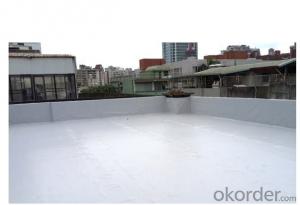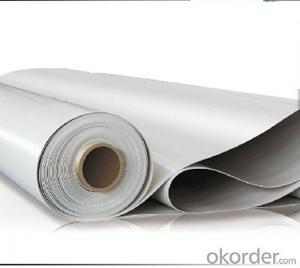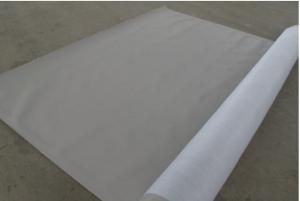PVC Roofing Waterproof Membrane/Waterproof Membrane
- Loading Port:
- Qingdao
- Payment Terms:
- TT OR LC
- Min Order Qty:
- 2000 m²
- Supply Capability:
- 300000 m²/month
OKorder Service Pledge
OKorder Financial Service
You Might Also Like
Introduction of PVC Waterproof Membrane
Polyvinyl Chloride (PVC) waterproof membrane is a new polymer waterproof membrane. The raw material is polyvinyl chloride resin, mixed with plasticizer, filler, antioxygen, ultraviolet absorber and other auxiliaries.
Features of PVC Waterproof Membrane
1)Excellent aging resistance. Service life of roofing material is over 20 years; service life of underground material is over 50 years.
2)Root resistant penetration, specially used on planting roofings.
3)Welding installation. Joints are solid and environment friendly, no pollution.
4)High tensile strength, good elongation and dimensional stability.
5)Good plasticity, easy and suitable for details installation.
6)Fireproof. Fire extinguished out of the ignition resource.
7)Surface is smooth, no fading and dirty resistant.
8)Width is over 2m. Construction wastage is small, more economical.
Classification and Specification of PVC Waterproof Membrane
N: Homogeneous PVC membrane
L: PVC membrane with fabric backing
W: Reinforced PVC membrane
Thickness: 1.2mm/1.5mm/2.0mm
Size: 2.05mx20m
Color: white/grey, or any other colors.
Application of PVC Waterproof Membrane
PVC membrane applies special formula and its service life is much longer than other general waterproof membranes. Its excellent performance makes it be widely used in every field.
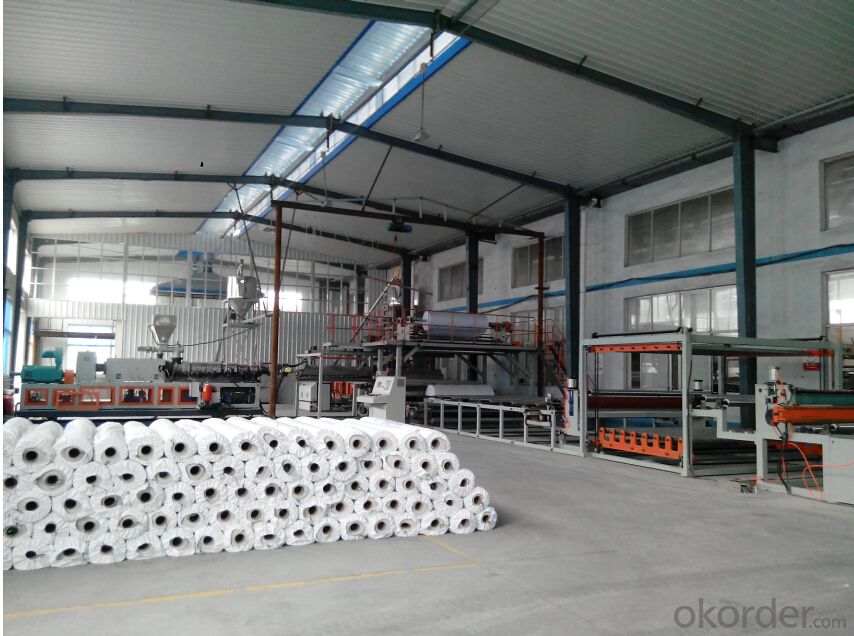
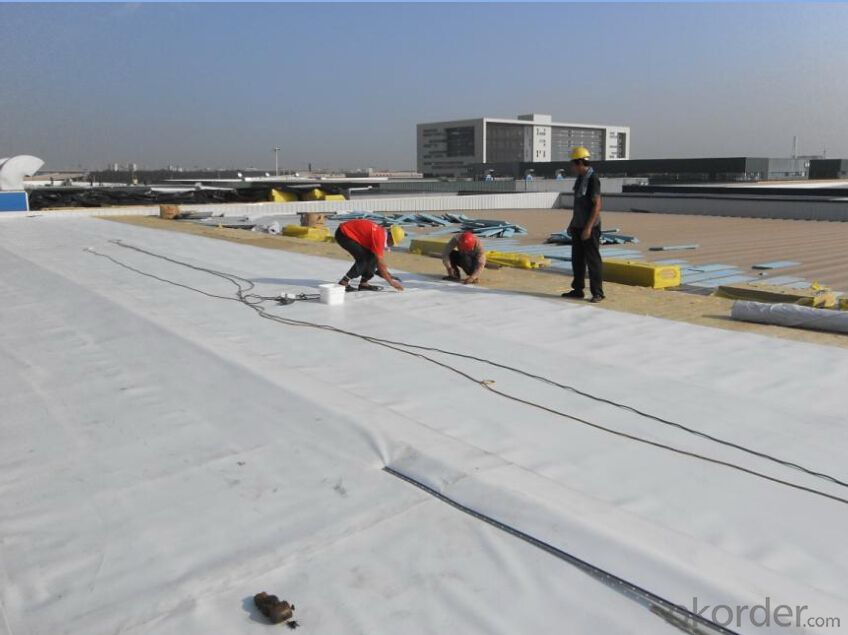
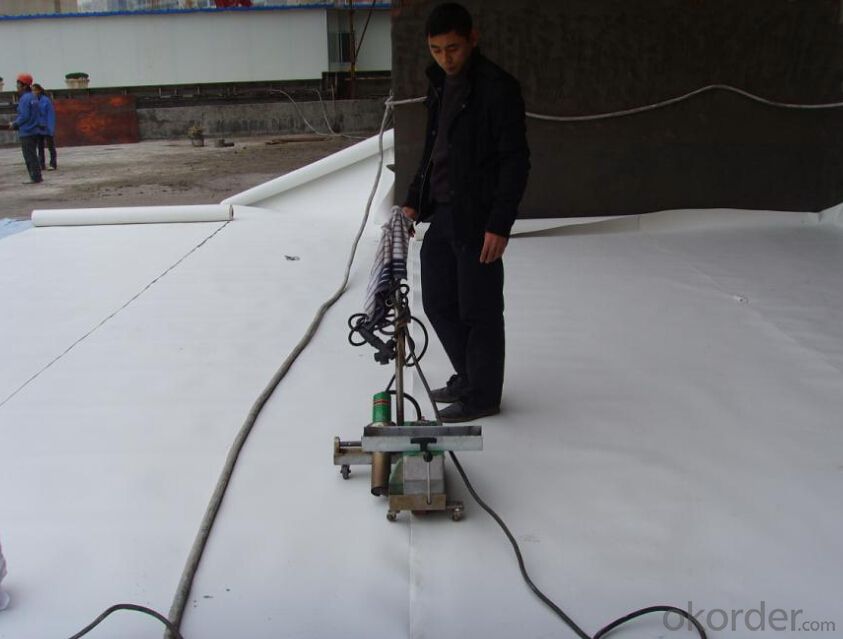
FAQ:
Can you produce 4m width?
Yes, no problem for us. We have four bases in China, largest one in this field.
How many quantity in one 20'' container for 1.2mm and 1.5mm?
480rolls, 11520m2 for 1.2mm and 400rolls, 9600m2 for 1.5mm
Can you provide free samples?
Yes, our samples are free, but express fees usually on buyer's account.
- Q:Can a waterproofing membrane be used in commercial buildings?
- Yes, a waterproofing membrane can be used in commercial buildings. Waterproofing membranes are used to protect various parts of a building, including roofs, foundations, and basements, from water intrusion. In commercial buildings, where there may be a higher risk of water damage due to larger surface areas, increased foot traffic, and complex architectural designs, waterproofing membranes can provide an effective solution. These membranes are designed to create a protective barrier against water, preventing leaks, dampness, and potential structural damage. Additionally, waterproofing membranes can enhance the longevity of the building by reducing the risk of deterioration caused by water exposure. Thus, incorporating a waterproofing membrane system in commercial buildings can help maintain a safe and dry environment, protect valuable assets, and maximize the lifespan of the structure.
- Q:Can a waterproofing membrane be used on wood block surfaces?
- Certainly! Waterproofing membranes are a suitable option for safeguarding wood block surfaces. The utilization of a waterproofing membrane on wood block surfaces, like decks or wooden floors, can prove advantageous by shielding against water damage and prolonging the wood's lifespan. These membranes function as a barrier, effectively preventing water from infiltrating the wood and causing deterioration, such as rot, warping, or decay, over time. To guarantee optimal outcomes, it is crucial to select a waterproofing membrane explicitly designed for wood surfaces and adhere to the manufacturer's instructions for application. By doing so, the wood block surface can be adequately protected and maintained, ensuring its resilience and longevity.
- Q:Can a waterproofing membrane be used for underground fuel storage tanks?
- Yes, a waterproofing membrane can be used for underground fuel storage tanks. A waterproofing membrane acts as a barrier that prevents the penetration of water and moisture into the tank and protects the tank from corrosion and leaks. This is crucial for underground fuel storage tanks as they are vulnerable to moisture infiltration due to their location below the ground. By applying a waterproofing membrane to the tank, it helps to ensure the integrity and longevity of the tank by providing a durable and reliable waterproof seal. It is important to choose a waterproofing membrane that is specifically designed for fuel storage applications to ensure it can withstand the harsh conditions and chemicals associated with storing fuel underground.
- Q:Can a waterproofing membrane be applied on top of roofing materials?
- Applying a waterproofing membrane on top of roofing materials is a common practice in the construction industry. This is crucial for areas with heavy rainfall or extreme weather conditions, as it provides an extra layer of protection against water infiltration. The waterproofing membrane acts as a barrier, preventing water from seeping through the roof and causing damage to the underlying structure. It is worth noting that depending on the type of membrane used, it can also improve insulation and enhance the energy efficiency of the building. To ensure the effectiveness and longevity of the waterproofing system, it is important to follow proper installation techniques and adhere to the manufacturer's guidelines. It is advisable to consult with a professional roofing contractor or waterproofing specialist to determine the most suitable membrane and installation method for your specific roofing materials and conditions.
- Q:How does a waterproofing membrane work?
- A waterproofing membrane is a barrier that is applied to a surface to prevent water from penetrating it and causing damage. The membrane is typically made of a flexible material, such as rubber or plastic, which is resistant to water. The primary function of a waterproofing membrane is to create a continuous layer of protection that prevents water from seeping through the surface it is applied to. This can be particularly important in areas that are prone to moisture, such as basements, roofs, and bathrooms. When a waterproofing membrane is applied to a surface, it forms a seamless and impenetrable barrier that prevents water from passing through. The membrane is typically installed in multiple layers to ensure maximum protection. These layers are often reinforced with materials like fiberglass or polyester to enhance their strength and durability. In addition to preventing water from penetrating a surface, a waterproofing membrane also helps to redirect water away from the area. The membrane is designed in a way that encourages water to flow towards drains or other designated outlets, effectively channeling it away from the protected area. Furthermore, a waterproofing membrane is also resistant to the effects of moisture, such as mold and mildew growth. By blocking the entry of water, it helps to maintain a dry and healthy environment. Overall, a waterproofing membrane is a vital component in protecting structures and surfaces from water damage. It provides a reliable and long-lasting solution for preventing leaks, seepage, and moisture-related issues, ensuring the longevity and integrity of the protected area.
- Q:Can a waterproofing membrane be applied on top of existing coatings?
- Yes, a waterproofing membrane can be applied on top of existing coatings. However, it is essential to ensure that the existing coating is in good condition and properly adhered to the surface. Additionally, the compatibility between the existing coating and the waterproofing membrane should be checked to ensure proper adhesion and effectiveness. A professional evaluation is recommended to determine the suitability and compatibility of applying a waterproofing membrane over existing coatings.
- Q:Can a waterproofing membrane be used for underground bunkers?
- Underground bunkers can utilize waterproofing membranes to great effect. Designed to establish a formidable defense against moisture, these membranes effectively thwart water infiltration into structures. This renders them an optimal solution for underground bunkers, which are susceptible to water encroachment due to their subterranean nature. By affixing a waterproofing membrane to the walls and floor of the bunker, it becomes possible to avert water seepage and maintain a dry interior. This is of paramount importance for safeguarding any stored items or occupants within the bunker. Moreover, waterproofing membranes offer additional advantages, such as insulation and protection against radon gas. It is crucial to select a membrane explicitly crafted for underground applications and capable of withstanding the unique conditions and pressures associated with subterranean environments.
- Q:Can a waterproofing membrane be used for plant rooms or mechanical spaces?
- Yes, a waterproofing membrane can be used for plant rooms or mechanical spaces. These areas often require protection against water damage due to the presence of pipes, equipment, or other mechanical systems. A waterproofing membrane provides an effective barrier to prevent water intrusion and protect the integrity of the space.
- Q:Can a waterproofing membrane be used in industrial facilities or warehouses?
- Yes, a waterproofing membrane can be used in industrial facilities or warehouses. It provides an effective barrier against water penetration, protecting the infrastructure and contents from potential water damage.
- Q:Can a waterproofing membrane be used in mining or excavation projects?
- Indeed, mining or excavation projects can make use of a waterproofing membrane. Such membranes are specifically crafted to thwart the infiltration of water and other liquids, making them a perfect remedy for regions susceptible to water intrusion, such as mines or excavations. Typically, these membranes are fashioned from resilient substances like rubber or bitumen, and they are affixed to the walls, floors, or roofs of these structures to establish an impervious barricade. By employing a waterproofing membrane, mining and excavation projects can diminish the likelihood of water harm, safeguard equipment and infrastructure, and guarantee a secure working environment for laborers.
1. Manufacturer Overview |
|
|---|---|
| Location | |
| Year Established | |
| Annual Output Value | |
| Main Markets | |
| Company Certifications | |
2. Manufacturer Certificates |
|
|---|---|
| a) Certification Name | |
| Range | |
| Reference | |
| Validity Period | |
3. Manufacturer Capability |
|
|---|---|
| a)Trade Capacity | |
| Nearest Port | |
| Export Percentage | |
| No.of Employees in Trade Department | |
| Language Spoken: | |
| b)Factory Information | |
| Factory Size: | |
| No. of Production Lines | |
| Contract Manufacturing | |
| Product Price Range | |
Send your message to us
PVC Roofing Waterproof Membrane/Waterproof Membrane
- Loading Port:
- Qingdao
- Payment Terms:
- TT OR LC
- Min Order Qty:
- 2000 m²
- Supply Capability:
- 300000 m²/month
OKorder Service Pledge
OKorder Financial Service
Similar products
New products
Hot products
Related keywords
